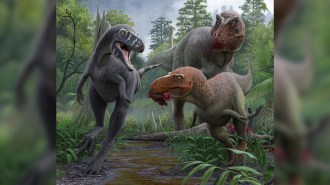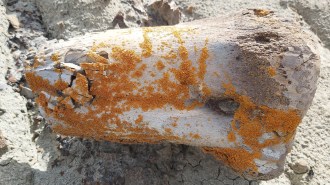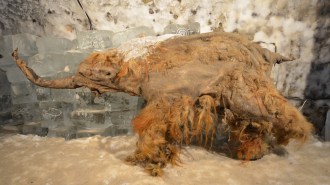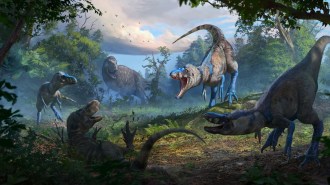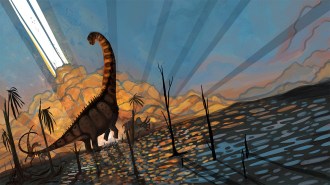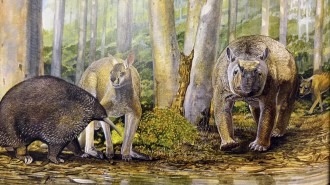12 amazing fossil finds of 2015
Meet the oldest supershark, the newest Arctic dinosaur, the Carolina Butcher and more
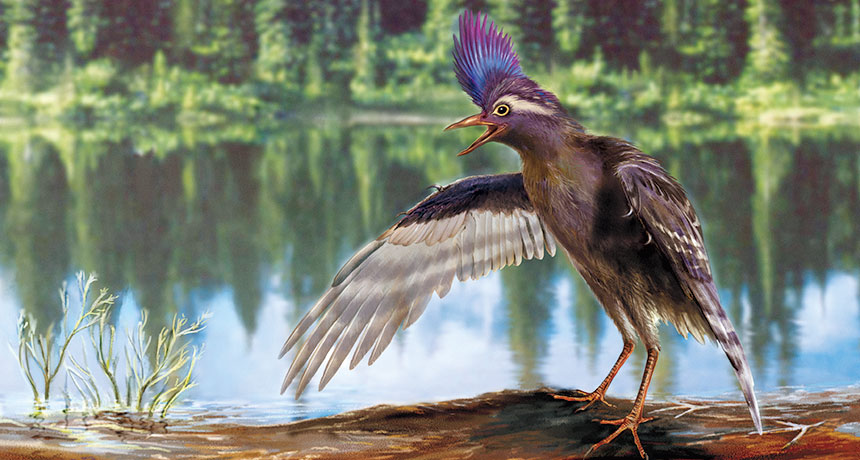
FOSSIL FINDS Archaeornithura meemannae, a 130-million-year-old bird, was one of several fossil finds to dazzle and intrigue scientists in 2015.
Zongda Zhang
From a spongelike speck to a bird built to terrify, 2015’s fossil finds added details, drama — and some real characters — to the story of life on Earth. These specimens flesh out life’s timeline too, spanning nearly 600 million years of history.
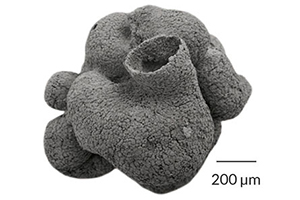
600 million years ago
Ancient sponge ancestor
Barely the size of a pinhead, this tiny creature (called Eocyathispongia qiania) had tubular chambers and surface cells that resemble those of modern sponges (SN: 4/4/15, p. 12).
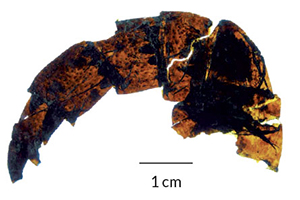
460 million years ago
Earliest sea scorpion
The remains of this sea monster (Pentecopterus decorahensis) were found in an ancient impact crater in Iowa. It grew up to 1.7 meters long and had bristly, serrated limbs (SN: 11/14/15, p. 5).
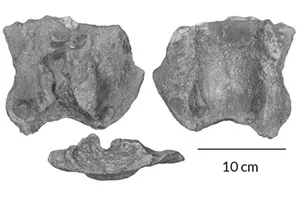
300 million years ago
Texas supershark
The oldest known supershark was 8.5 meters long, larger than today’s great whites. It swam in warm seas over what’s now Texas (SN Online: 10/20/15).
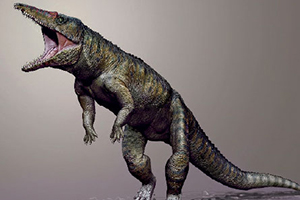
231 million years ago
Carolina Butcher
This croc ancestor, Carnufex carolinensis, which stretched 3 meters and may have walked on two legs, was a top predator in what’s now North Carolina, hence its fearsome nickname (SN: 4/18/15, p. 16).
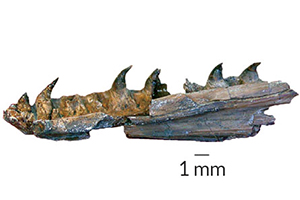
167 million years ago
Jurassic snakes
Four newly identified species suggest that snakes appeared 70 million years earlier than thought, living alongside the dinosaurs (SN: 2/21/15, p. 11). The tip-off: skulls like modern snakes, with teeth that curve backward.
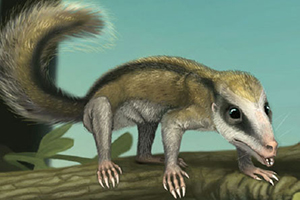
165 million years ago
Early tree climber
Chinese fossils suggest this shrew-sized creature had curved claws for climbing. Agilodocodon scansorius is the oldest known tree dweller among docodonts, ancient kin of today’s mammals (SN Online: 2/12/15).
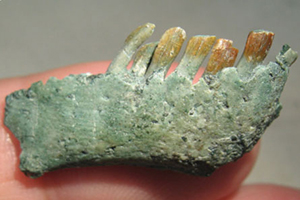
150 million years ago
Vegetarian T. rex relative
This dino, Chilesaurus diegosuarezi, had a T. rex’s tiny forearms and sturdy legs. But not-so-sharp teeth suggest it ate plants, a sign that not all theropods were carnivores (SN: 5/30/15, p. 8).
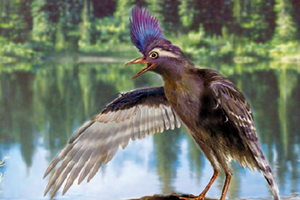
130.7 million years ago
Oldest modern birds
Feather-flecked, hummingbird-sized fossils of this water wader, Archaeornithura meemannae, found in China, push the earliest record of modern bird relatives back 6 million years (SN: 6/27/15, p. 5).
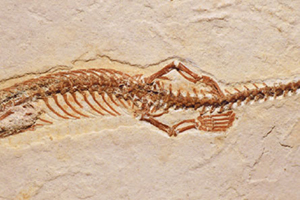
120 million years ago
Four-legged snake
An elusive link between snakes and lizards turned up in a German museum specimen. The leggy fossil find hints that snakes might have evolved on land (SN: 8/22/15, p. 10).
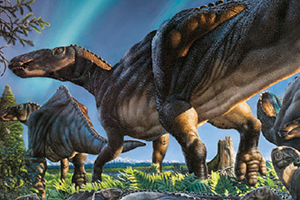
69 million years ago
New Arctic dino
This newfound duck-billed dino, Ugrunaaluk kuukpikensis, joins about a dozen other dinosaurs that roamed the chilly, polar forests and endured long stretches of darkness (SN: 10/31/15, p. 5).
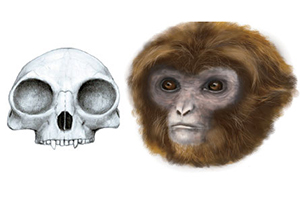
11.6 million years ago
Gibbonlike ape ancestor
The remains of a small tree dweller, dubbed Laia but officially Pliobates cataloniae, suggest that today’s apes descended from small primates instead of large ones, as scientists had believed (SN: 11/28/15, p. 10).
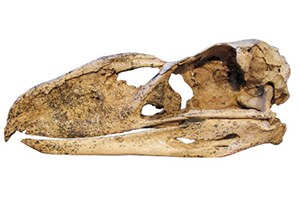
3.5 million years ago
Terror bird
This South American predator (Llallawavis scagliai), one of many prowling the continent, stood 1.2 meters tall and used its extra sturdy beak as a hatchet when hunting (SN: 5/2/15, p. 11).

